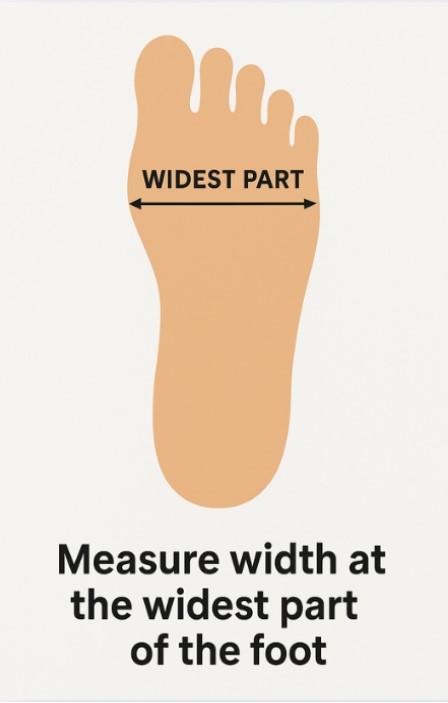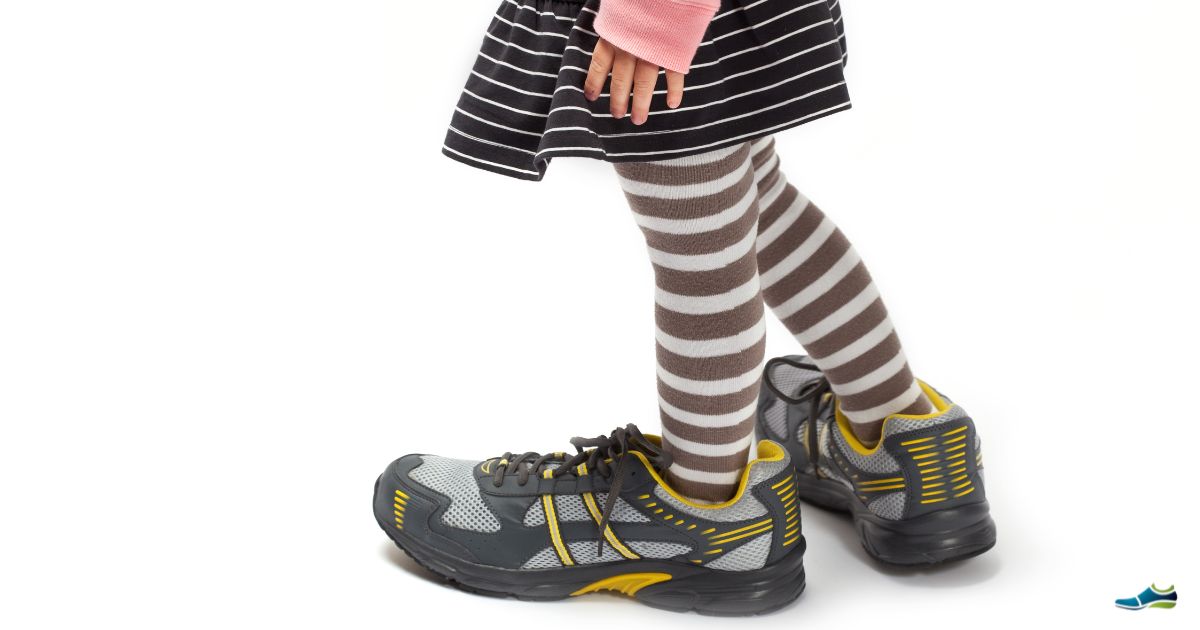Finding the right shoes can be really tough when you have narrow feet. If most footwear feels loose or your feet constantly slip around inside your shoes, you’re not alone.
While wide feet get a lot of attention in the shoe world, those with narrow feet often face their own unique challenges.
In this guide, we’ll explore what causes narrow feet, how to find the right fit, and what types of shoes are best for keeping you comfortable and supported. If you are not sure about your foot width, read my article “Are My Feet Wide?”
How to Choose the Best Shoes for Narrow Feet
Most important is that if you are buying online, make sure you have accurately measured the width of your feet and are happy that the shoes you want are available in your width size. For some extra peace of mind, find a supplier who will accept returns.
Same goes with retail outlets. Find one geared up to measure your feet, and find the right size for you.
Here are some features to look for when shopping for the best shoes for narrow feet and help in finding the perfect pair, specifically offering you proper support.
1. Narrow Width Options
Look for shoes that come in various widths, especially A or AA sizes. Brands that specialise in different width fittings are your best bet. Even within standard sizing, some brands run naturally narrower — often European or athletic shoe brands.
2. Adjustable Closures
Lace-ups, straps, and buckles can make a big difference. They help secure your foot and prevent sliding, especially during walking or running.
3. Heel and Arch Fit
Narrow feet usually need a snug heel cup and decent arch support to prevent your foot from shifting. Look for shoes with a contoured footbed and a structured design.
4. Avoid Slip-Ons
While convenient, slip-on shoes tend to be cut for average feet. They often lack the structure needed to hold a narrow foot in place, leading to a loose, sloppy fit.
The Best Types of Shoes for Narrow Feet
👟 Walking and Running Shoes
When it comes to athletic footwear, you’ll have more choice — many brands offer narrow widths. Choose models with a firm heel counter and good arch support. Lacing systems that extend down to the toe area can help you to customise the fit even further.
👠 Dress Shoes
Dress shoes for narrow feet should feature pointed or almond toes and low-volume uppers. Mary Janes or court shoes with a strap offer extra security. Loafers can be tricky unless they’re specifically marked as narrow fit.
👢 Boots
Boots with a side zip and lace-up front are ideal. They allow for a snug fit at both the foot and ankle. Avoid wide openings at the top unless you’re wearing them with thick socks or trousers tucked in.
🥿 Everyday Casual Shoes
Look for canvas or leather shoes with laces or Velcro fastenings. A lower volume interior helps cradle your foot, and removable insoles give you the chance to add your own narrow foot orthotics if needed.
Extra Tips to Improve Shoe Fit for Narrow Feet
- Use insoles: A thin, firm insole can help fill excess space and lift your foot slightly to create a better fit.
- Heel grips or pads: These can reduce rubbing and slipping, especially in loafers or slip-ons.
- Go custom: If you’re struggling to find any ready-made shoes that work, a podiatrist or orthotist can help you get custom-made insoles or footwear.
What Does It Mean to Have Narrow Feet?
Narrow feet are just what they sound like — feet that are slimmer across the forefoot and heel than the average shoe is designed to accommodate. You might be naturally narrow-footed, or your feet may have changed shape over time due to weight loss, age, or decreased muscle tone.
Unlike wide feet, where discomfort usually comes from compression, narrow feet struggle with instability, slippage, and friction blisters. In my opinion, that finding the best shoes for narrow feet is far more challenging than finding wider fitting shoes.
Here are some common signs that you need a narrower shoe:
- Your feet slide forward or sideways in most standard shoes
- You frequently get blisters or sore spots on your toes or heels
- You have to tie your laces extra tight for a snug fit
Why Standard Shoes Don’t Work for Narrow Feet
Most off-the-shelf shoes are made for the average foot width — generally a ‘D’ width for men and a ‘B’ width for women.
If your feet fall into the ‘A’ (narrow) or ‘AA’ (extra narrow) category, those standard sizes just won’t do the trick. You’ll likely find yourself compensating with thick socks or heel grips, which rarely provide long-term comfort.
Where To Measure Foot Width

Start by measuring the widest part of the foot as shown in the diagram,
Measure without socks but take them into consideration, perhaps add a millimetre or two to the measurement.
Refer to the manufacturer charts to give yourself an idea as to how narrow your feet are.
Brands do vary so shop around.
There is approximately 1/8″ between width sizes.
Final Thoughts
Having narrow feet doesn’t mean you have to settle for shoes that don’t fit or hurt your feet. With the right styles, materials, and width options, you can walk in comfort without stuffing your shoes with makeshift fixes. It’s all about knowing what to look for and choosing footwear that’s designed to work with your foot — not against it.
And don’t forget: fit always comes first. A narrow, supportive shoe will serve you better than the trendiest option that leaves you limping home.
Once you have found a brand that caters for your narrow feet, and you are quite confident that their shoes will fit you, stick with that brand where possible.
Frequently Asked Questions
Q: How do I know if I have narrow feet?
A: If your feet often slide around inside standard shoes, or you constantly get blisters or gaps around the sides, you likely have narrow feet. A proper foot width measurement can confirm this.
Q: Are narrow width shoes easy to find?
A: They can be a little tricky to find on the high street, but many brands now offer narrow width options online, particularly for athletic or orthopaedic footwear.
Q: What is considered a narrow width?
A: For women, ‘A’ or ‘AA’ is typically considered narrow or extra narrow. For men, a ‘B’ width is narrow. Standard widths are ‘B’ for women and ‘D’ for men.
Q: Can I make regular shoes fit better if I have narrow feet?
A: Yes, using insoles, heel grips, or tongue pads can improve fit, but it’s always best to choose narrow-fit shoes when possible for better support and comfort.
I will be making some Brand recommendations for the best shoes for narrow feet very soon.

